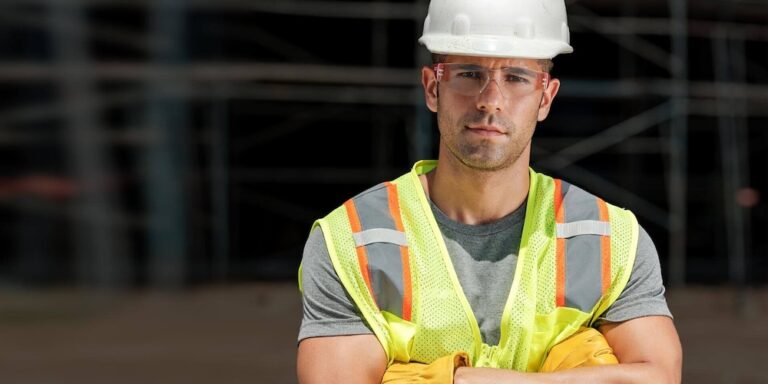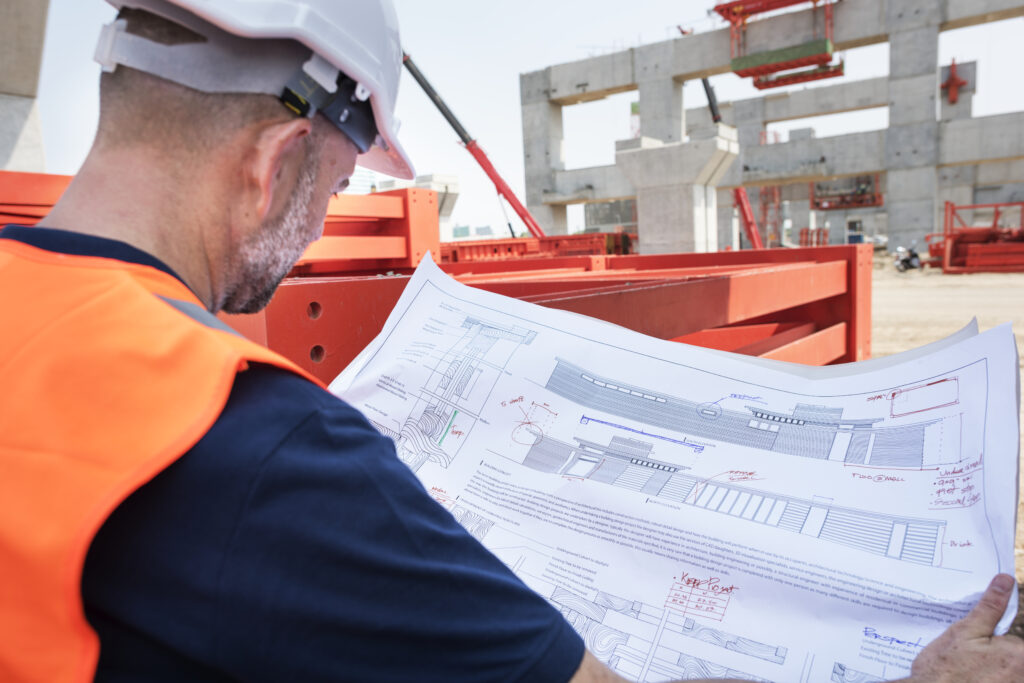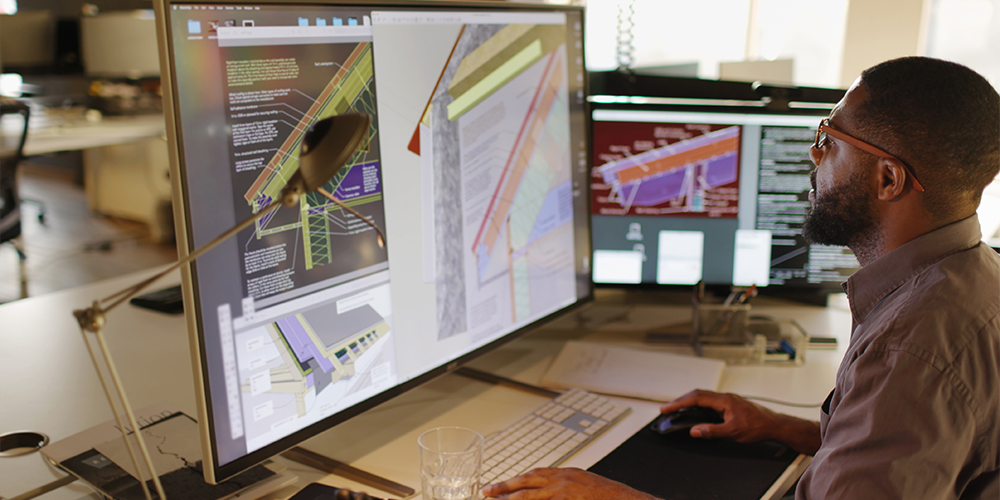— 6 min read
Construction Management: The CM’s Role on a Construction Project
Last Updated Jan 13, 2025
Last Updated Jan 13, 2025

Whether you’re just starting out in the industry or you’re an open-minded expert who wants to know how the role has changed and will continue to do so in this new decade, this definitive guide provides an overview of everything you need to grow as a construction manager.
Table of contents
Construction Management Basics
Construction management is a specialised field of project management that involves supervision and coordination of construction activities to ensure successful project delivery. The term can also refer to a field of study: Many colleges and universities offer degree programs in construction management.
The ultimate goal of construction management is to minimise risk by controlling a project's schedule, budget (cost), and quality.
Construction Manager Job Outlook
- Average Base Salary: $160,533 (source)
- Education Requirements: B.A. in Construction Management, Construction Science or related field
- Entry-Level Work Experience Needed: Depends on education level
- Soft Skills: Leadership, collaboration, customer-service, decision-making, public speaking, time management, writing, budgeting, technology and innovation
Construction Project Hierarchy
To fully understand how construction managers ensure successful projects, let’s put it within the context of the four various project stakeholders in the construction job title hierarchy.
- Owner-Developer: An individual or business entity who commissions and funds a project. Owners come from many different industries—real estate, development, healthcare, education and more. Many don’t have dedicated construction oversight teams and choose to contract out the work to a certified construction manager.
- Construction Manager: The person or team hired by the owner to provide oversight of the entire project’s delivery—from planning and preconstruction through construction and turnover.
- Architect and/or Engineer: The person or firm hired by an owner to manage project design and technical coordination between engineering disciplines.
- Head Contractor: The team hired by an owner to oversee day-to-day construction operations and subcontractor productivity during construction.
Construction Manager vs. Head Contractor
Both the construction manager and head contractor job descriptions describe themselves as the head contractors on the job. Which is why it’s not surprising that many find it difficult to distinguish head contractors from construction managers.
If you’re choosing between a career as a construction manager vs head contractor, this can give you an idea of the difference between the two roles.
Beyond their similarities, head contractors and construction managers have fundamentally different organisational structures, business relationships with owners and levels of involvement with the project. Here are just a few of the main differences.
| Construction Manager | Head Contractor | |
|---|---|---|
| Hiring Timeline | Hired by owners during planning or preconstruction. Advises the project owner when hiring head contractors, designers and architects, and more. | Chosen by owners through a tendering process; become involved during the construction phase. |
| Responsibilities | Collaborate with engineers and architects assigned to provide design input and advice. Hire low-level managers to oversee particular parts of a project. Create project budgets and work activity timelines. Analyse and provide guidance on contracts or technical material to colleagues | Examine construction diagrams and contract terms to set an appropriate tender amount to present to the client. Communicate with the project architect during the construction phase. Procure reliable subcontractors to handle specialised work. Ensure all work is completed correctly and on time. |
| Organisational Structure | An individuals or teams of consultants. Not rank and file employees who perform the actual construction. They are estimators, project managers, accountants or other professionals with responsibilities that come into play before, during and after a project. | Business entities with their own site and office employees like executives, administrators, finance, project managers, site managers, foreman. Hire their own network of trusted business partners like speciality subcontractors and vendors. |
| Owner Relationship | Perform their functions at the behest of the owner. The CM assists during preconstruction by hiring subcontractors, or on larger projects, one or more head contractors. Work from a predetermined fee so they aren’t in a competitive relationship with the owner, in which they are trying to keep costs down so they can make a profit on their tender amount. | HCs get new projects through competitive tendering and are therefore third parties in a construction process from the start. The HC provides a set price and builds all aspects of the project that are covered in the contract. If the HC manages to spend less than the tender price, then profit is made. When unforeseen issues arise, as they usually do, and they aren’t already included in the contract, then the owner must pay additional fees to cover the costs, change the specifications, or reduce the project’s scope. |
Phases of Construction Management
A construction manager is active throughout the entire lifecycle of a project. During each phase, they play an important role in successful project completion.
1. Planning
Carefully coordinated pre-planning is the first major phase of risk mitigation. During the planning and predevelopment phase, the owner defines:
- Why there is a need for a building
- What their goals and success metrics will be
- How the needs and goals will impact the design
- Scopes for budget and timeline
Simultaneously, the construction manager works with the architects, engineers and other hired consultants to agree on the feasibility of those goals and do their best to plan ahead for potential construction setbacks.
The construction manager will also research which procurement or delivery method is most appropriate considering the task at hand. Just because design-tender-build is the traditional way of delivering construction projects, it does not mean it is the best. In fact, the adversarial relationships engendered by design-build often add more stress, cost and risk to project outcomes.
At best, design-build can provide owners with a fixed price contract to start with. But unless it is a traditional project with few unknowns, it is likely the price will change. This can damage relationships and lead to cut corners from contractors.
The greater the risks at the beginning, the more important it is to plan correctly around the right delivery method to avoid additional costs. Nevertheless, the greater the risks at the beginning, the greater the chance for additional costs.
2. Preconstruction
During preconstruction early plans are submitted for building permits and head contractor tenders. This could include construction management contracts, drawings and specifications.
Meanwhile, the construction manager is in charge of hiring all construction teams and utilising risk management best practices to ensure that issues are resolved prior to the start of construction. Proper risk management minimises the amount of variations and delays down the road.
3. Construction
During the construction phase, the construction manager works closely with the head contractor on a variety of activities, including:
- Quality control inspections
- Site investigations
- Monitoring head contractor safety programs
- Monitoring insurance
- Answering RFIs
- Reviewing and approving technical submittals
- Coordinating permits
- Managing the budget
- Scheduling timely payment for work completed
- Ensuring the project is delivered as designed
All of this keeps the project moving smoothly while keeping stakeholders informed and satisfied.
4. Closeout
Defect lists are completed. Keys and as-builts are handed over to the owner.
Management of the building is officially “turned over” from the construction manager and head contractor to the owner.
The owners must be provided with all project information and close out documents such as manuals, warranties, as-builts and closed out ledgers. Insurance must also be changed from the course of construction to permanent property insurance. And in some cases, the owner is trained on how to use and manage their facility.
Categories:
Tags:
Written by
Emma De Francesco
18 articles
Emma is currently Strategic Product Consultant at Procore where she loves partnering with clients to help them achieve the best possible results. She has worked as a Project Manager in previous roles, responsible for overseeing small to medium-sized projects across various sectors including commercial, health and lifestyle, retail, government and hotels. Throughout these projects, she managed everything from project costs, program and quality & safety, to design management, procurement, and authority approvals.
View profileExplore more helpful resources

Control the Chaos: Standardising Construction Project Document Workflows
Document control plays a central role in managing risk, meeting deadlines, and delivering projects to spec. As builds become more complex and teams become increasingly dispersed, the volume and velocity...

Key Differences Between Contractors and Subcontractors
In commercial construction, contractors engage directly with project owners to deliver complete construction projects, while subcontractors perform specific scopes of work under the contractor’s management. Understanding where each role begins...

Ctrl + Build: Right First Time – Why Hyperscalers are Raising the Bar on Quality and How Builders Can Keep Up
The race to build data centres is fast and furious. Hyperscalers are pushing hard on speed, performance, compliance and price – and builders are expected to keep up. With construction...

Part 3: Great on the Tools, Behind on the Books. Why Business Know-how Matters More Than Ever
In the final instalment of this three-part series, I catch up with Craig Dunlop, Construction Manager and Business Development Manager at Mainbrace Constructions, to dig into why so many tradies...